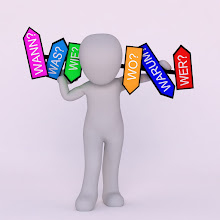CodeChef recently revamped its practice page to make it easier for users to identify the next problems they should solve by introducing some new features:
- Recent Contest Problems - contains only problems from the last 2 contests
- Separate Un-Attempted, Attempted, and All tabs
- Problem Difficulty Rating - the Recommended dropdown menu has various difficulty ranges so that you can attempt the problems most suited to your experience
- Popular Topics and Tags
Like most users, Chef didn’t know that he could add problems to a personal to-do list by clicking on the magic '+' symbol on the top-right of each problem page. But once he found out about it, he went crazy and added loads of problems to his to-do list without looking at their difficulty rating.
Chef is a beginner and should ideally try and solve only problems with difficulty rating strictly less than . Given a list of difficulty ratings for problems in the Chef’s to-do list, please help him identify how many of those problems Chef should remove from his to-do list, so that he is only left with problems of difficulty rating less than .
Input Format
- The first line of input will contain a single integer , the number of test cases. Then the testcases follow.
- Each testcase consists of 2 lines of input.
- The first line of input of each test case contains a single integer, , which is the total number of problems that the Chef has added to his to-do list.
- The second line of input of each test case contains space-separated integers , which are the difficulty ratings for each problem in the to-do list.
Output Format
For each test case, output in a single line the number of problems that Chef will have to remove so that all remaining problems have a difficulty rating strictly less than .
Constraints
Subtasks
- Subtask 1 (100 points):
- Original constraints
Sample Input 1
5
3
800 1200 900
4
999 1000 1001 1002
5
1 2 2 2 5000
5
1000 1000 1000 1000 1000
3
900 700 800
Sample Output 1
1
3
1
5
0
Explanation
Test case : Among the three difficulty ratings, Chef only needs to remove the problem with difficulty rating , since it is . So, the answer is .
Test case : Among the four difficulty ratings, Chef needs to remove the problems with difficulty ratings of , , and , since they are . So, the answer is .
Test case : Among the five difficulty ratings, Chef needs to remove the problem with a difficulty rating of , since it is . So, the answer is .
Test case : Chef needs to remove all the five problems, since they are all rated . So, the answer is .
Test case : Chef does not need to remove any problem, since they are all rated . So, the answer is .
solution in cpp
- #include<iostream>
- #define ll long long
- #include<vector>
- #include<stack>
- #include<string>
- #include<algorithm>
- using namespace std;
- void solve()
- {
- ll n;
- cin >> n;
- vector<ll> v(n);
- for (ll i = 0; i < n; i++)
- {
- cin >> v[i];
- }
- ll count = 0;
- for (ll i = 0; i < n; i++)
- {
- if (v[i] >= 1000)
- count++;
- }
- cout << count << "\n";
- }
- int main()
- {
- int t;
- cin >> t;
- while (t--)
- {
- solve();
- }
- return 0;
- }










No comments:
Post a Comment